
SUAVE Furniture made high-quality furniture, and it made it well. That’s not to say that it didn’t have some persistent sore points within the business, but those sore points were the same ones that seemed to affect every manufacturing business. Sometimes, jobs got delayed because they had to wait for another batch of jobs to finish, other jobs got interrupted so something more urgent could be pushed through, and that’s just how things were everywhere. You tried to minimise the amount of time that got wasted doing setups, and you tried to cope with the stacks of inventory everywhere, and business went on like usual.
Until, one Friday night, when it didn’t.
That was the night that the parts warehouse burned down. It was quite a spectacular blaze, because the warehouse was 20,000 square feet, and it was absolutely packed with varnished wooden furniture parts. Thankfully, nobody had been hurt in the fire, but in the 90 minutes it took to burn, that fire destroyed every finished part that SUAVE had. The factory building was damaged, mostly from smoke. A lot of the equipment was still usable, but the building was unsafe to work in until it could be inspected more thoroughly.

Not surprisingly, the SUAVE management team had a terrible weekend. It wasn’t just the loss of facilities that was a problem, or even the loss of all the finished furniture parts.
The real problem was the customers. SUAVE’s competitors had already been contacting SUAVE’s customers, telling them that SUAVE had had a massive fire and the customers wouldn’t be getting any furniture from SUAVE for months, and maybe it was time to think about changing suppliers.

In a weird sort of way, it made it much easier to decide what to do. SUAVE couldn’t wait for its facilities to be inspected and rebuilt, because if it did, the business was finished. That meant SUAVE had to start producing furniture and shipping it to customers straight away, even if it was just one piece to each customer, to show them that SUAVE was still in business.

That was the start of months of immense effort by everyone who worked for SUAVE. A small village of shipping containers appeared in the SUAVE car park, and that was where people worked to spray paint parts, or lacquer them, or trim them, or any of the other operations that needed to be done to get parts ready for assembly. SUAVE hired smaller buildings in other parts of town to do assembly in, and a lot of vans clocked up a lot of mileage transferring everything back and forth in small batches.

It helped that everyone understood that the old rules didn’t apply: there was no point in trying to do big batches, because that would cause everything to grind to a halt. So, the supervisors and operators found new ways of doing things, just so SUAVE could keep shipping things to customers as fast as possible… because if it didn’t adapt to the new situation, the entire business was finished.
Of course, working in shipping containers was an absolute pain in the neck, and of course, shipping small batches was awkward and difficult. It was a pretty chaotic time for SUAVE Furniture!
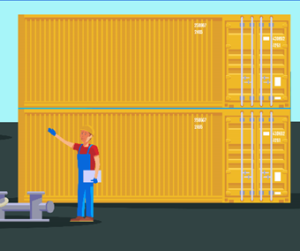
But, surprisingly, there turned out to be some really good points as well.
Internal lead times dropped significantly. For one thing, any job which was released got started pretty much straight away. Jobs were much less likely to be interrupted by other, more urgent, jobs, too – because SUAVE was only doing small batches at a time, there were more places an urgent job could be inserted in the schedule without disrupting a job in progress. Doing small batches meant the business had to store and move less material, too, which was important when everything was set up in containers! Finally, it was easier to gauge progress on each job.
This experience gave the managers at SUAVE some important things to think about. Once the new warehouse was built, and the factory was ready for operations again, the management team decided to try to keep some of the advantages it had gained while SUAVE was operating out of containers and doing small batches.

The first thing the SUAVE managers needed to be sure of was that demand information was being communicated accurately, and without being artificially inflated by the people who scheduled which jobs to run and in what order. It was easy to choose a whole lot of jobs which required similar parts and batch them all together, but that was one of the things which led to long lead times and the entire factory being clogged up with parts and work-in-progress.
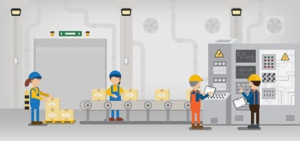
That didn’t mean things couldn’t be batched up at all, of course. If a job required multiple parts of the same type, it made sense to do them all in one run. So, that was the second thing that the SUAVE managers had to be sure of – aggregation could occur if the operators found that more efficient, but not at the expense of delaying jobs.
Finally, it was important to keep things moving, even in small amounts. Once one operation had finished enough parts that the next operation could start, those parts were moved on, even if the entire batch wasn’t finished yet.
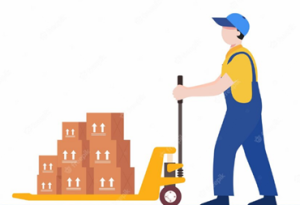
Implementing these changes worked well, and locked in the advantages that had been gained earlier. It was also a reassuring surprise to see the new warehouse was consistently less than half full, even while orders were being completed faster than ever before. The biggest problem was stopping people from trying to increase the batch sizes!
It wasn’t really their fault – most of their experience had been with the idea that ‘the bigger the batch, the more efficient you are,’ and it was easy to think that it was helpful to add some extras to a batch. Maybe they knew there was another job about to start that would need them, or maybe they were parts that would always get used sooner or later, or maybe they just wanted to do two jobs’ worth at once and save time on setups.
But SUAVE had learnt that it wasn’t actually helpful to increase batch sizes. All the extra parts had to go somewhere, after all, and that meant they got in the way, or needed storage space.
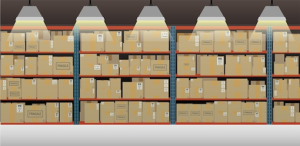
While the bigger batch was being worked on, it either held up other jobs or was interrupted by them, and that just added to the traffic jam. The SUAVE management team had to be firm about keeping batch sizes down. It might feel strange to be doing more setups, but that actually saved time compared to clogging the entire factory up with work-in-progress!
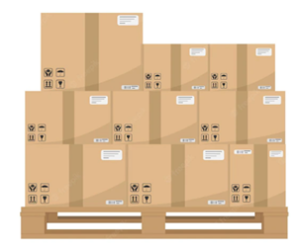
It turned out that switching to smaller batch sizes had increased throughput and decreased lead times by significant amounts. It was just a shame that it took a devastating fire to make people realise that…